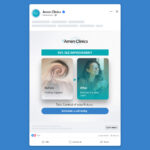Contents:
- Introduction
- Inbound Marketing vs. Outbound Marketing
- Advantages of Inbound and Outbound Marketing
- Disadvantages of Inbound and Outbound Marketing
- Content Differences in Inbound vs. Outbound Marketing
- When to Use Inbound and Outbound Marketing
- Incorporating Trust in Your Marketing Strategy
- Actionable Takeaways for Internet Marketers
- FAQs for Internet Marketers
- Conclusion
Introduction
Understanding Inbound and Outbound Marketing
In the vast expanse of the digital marketing universe, two stars shine the brightest: inbound and outbound marketing. But what sets them apart? And more importantly, why should an internet marketer, like you, care about these distinctions? It’s not just about knowing the terms; it’s about wielding their power to craft campaigns that resonate.
Why Every Internet Marketer Should Know the Difference
The digital realm is ever-evolving, and with it, the strategies we employ. As internet marketers, we’re not just playing a game of numbers; we’re weaving narratives, building relationships, and creating experiences. Inbound and outbound marketing are more than just buzzwords—they’re the tools we use to paint our digital canvas. By understanding their nuances, you’re not just staying ahead of the curve; you’re shaping it.
Inbound Marketing vs. Outbound Marketing
- Definitions and Core Concepts – In the grand tapestry of digital marketing, two methodologies stand out, each with its unique hue and pattern: inbound and outbound marketing. At a glance, they might seem like two sides of the same coin, but delve deeper, and their distinct characteristics emerge.
Inbound Marketing: Often dubbed as ‘pull marketing,’ inbound marketing is the art of crafting content that beckons and entices. It’s the siren song that draws customers closer, making them willingly embark on a journey with your brand. From insightful blog posts to engaging social media content, it’s about creating value that your audience seeks.
Outbound Marketing: Contrarily, outbound marketing, known as ‘push marketing,’ is a bold proclamation in a crowded marketplace. It’s the billboard on a busy highway, the TV commercial during prime time, or the unsolicited email in an inbox. It’s proactive, often interrupting the audience’s current activity to grab their attention.
- How They Impact Internet Marketing Strategies
For the astute internet marketer, the dance between inbound and outbound marketing is a delicate ballet. While inbound marketing builds trust, fostering organic growth and long-term relationships, outbound marketing offers immediacy, casting a wide net to capture potential leads.
But it’s not a matter of choosing one over the other. It’s about harmonizing them, understanding when to softly pull your audience in and when to boldly push your message out. In the digital arena, where attention spans are fleeting, and competition is fierce, mastering the interplay between these strategies can be the key to a triumphant campaign.
Advantages of Inbound and Outbound Marketing
- Pulling Customers with Inbound Techniques
In the vast digital landscape, inbound marketing stands as a lighthouse, guiding those lost in the sea of content straight to your shores. Its allure lies in its subtlety and grace:
- Magnetic Appeal: Inbound marketing doesn’t shout; it whispers, drawing in those genuinely interested in what you have to offer. It’s the blog post that answers a burning question, the eBook that offers deep insights, or the webinar that educates and informs.
- Building Trust: By offering value without immediate expectation, inbound marketing fosters trust. It’s the gentle hand that guides a potential customer through their journey, nurturing them at every stage.
- Long-Term Gains: While it might not offer the immediacy of its counterpart, inbound marketing is the gift that keeps on giving. Content created today can continue to attract and convert months, even years down the line.
- Pushing Content with Outbound Strategies
Outbound marketing, on the other hand, is the bold adventurer, charting unknown territories and making its presence felt with gusto:
- Immediate Visibility: When you need to make a splash, outbound is your go-to. It’s the banner ad that captures attention, the promotional email that sparks interest, or the cold call that leads to a warm lead.
- Targeted Approach: Outbound marketing allows for precision. Want to reach a specific demographic or a niche audience? With the right data, your message can land directly in front of the eyes that matter.
- Controlled Messaging: With outbound marketing, you’re in the driver’s seat. You control the narrative, the timing, and the medium, ensuring your message is delivered just the way you envisioned.
For the discerning internet marketer, the beauty lies not in choosing one over the other but in weaving them together. It’s the symphony created when the gentle melodies of inbound marketing merge with the powerful crescendos of outbound strategies.
Disadvantages of Inbound and Outbound Marketing
- Challenges in Inbound Marketing for Internet Marketers
While inbound marketing paints a serene picture of organic growth and genuine connections, it’s not without its shadows. The very nature of its subtlety can sometimes be its undoing:
- Time-Intensive: Crafting quality content that resonates is no small feat. It demands time, effort, and patience. And even then, the fruits of labor might not be immediately evident.
- Unpredictable Results: The digital realm is fickle. Today’s viral post might be tomorrow’s forgotten memory. With inbound marketing, there’s no guaranteed formula for success.
- Overwhelming Competition: The internet is awash with content. Standing out, and being heard above the cacophony, can be a Herculean task for even the most seasoned marketer.
- Potential Pitfalls of Outbound Marketing
Outbound marketing, with its bold strokes and assertive strategies, too, has its challenges. It’s a double-edged sword that can cut both ways:
- Perceived Intrusiveness: The very essence of ‘push’ marketing can sometimes push too hard. Unsolicited emails, intrusive ads, or cold calls can turn potential customers away, leaving a sour taste.
- Higher Costs: Reaching out directly, especially through paid channels, can be a costly affair. Without a clear strategy, the return on investment can be elusive.
- Evolving Resistance: With ad-blockers on the rise and consumers becoming more discerning, the traditional outbound methods face increasing resistance. The challenge lies in innovating and staying relevant.
In the intricate dance of digital marketing, both inbound and outbound have their moments of grace and missteps. For the astute internet marketer, the key lies in recognizing these pitfalls and navigating them with finesse and strategy.
Content Differences in Inbound vs. Outbound Marketing
Tailoring Content for Each Strategy
In the grand theater of digital marketing, content is the protagonist, playing varied roles depending on the stage it’s set. Whether it’s the gentle allure of inbound or the assertive presence of outbound, the content must be tailored to fit its role to perfection.
- Inbound Content: A symphony of value and relevance, inbound content is the gentle whisper in a world of shouts. It’s not about the hard sell but the soft allure:
- Educational Blog Posts: These are the pillars of inbound, offering insights, answering questions, and establishing authority.
- Engaging Social Media Posts: More than just updates, these are conversations, building communities, and fostering engagement.
- Opt-in Newsletters: Personalized, value-packed, and delivered straight to the inbox, they nurture leads and deepen relationships.
- SEO-Driven Content: This is the silent worker, ensuring that when questions arise, your answers are readily available.
- Outbound Content: Bold, direct, and unapologetic, outbound content is the clarion call amidst the digital din:
- Direct Emails: Targeted, precise, and often promotional, they reach out to potential leads, sparking interest.
- Display Ads: Visually captivating, they grab attention, making a statement even in a fleeting glance.
- TV and Radio Spots: Traditional yet powerful, they cast a wide net, capturing a broad audience.
- Cold Calls and Direct Mail: Personal and direct, they reach out, making a connection even before the conversation begins.
Best Practices for Internet Marketers
In the dynamic world of internet marketing, understanding these content differences is paramount. It’s about recognizing the stage, understanding the audience, and then crafting the perfect script. Whether it’s the subtle art of drawing in with inbound or the bold strokes of reaching out with outbound, the content must resonate, engage, and convert.
When to Use Inbound and Outbound Marketing
Identifying the Right Moments for Each Strategy
In the grand ballet of digital marketing, timing is everything. Like a maestro conducting an orchestra, the astute marketer knows when to let the gentle notes of inbound marketing rise and when to let the powerful chords of outbound marketing dominate.
- Inbound Marketing: This is the gentle crescendo, building up over time, perfect for:
- Building Brand Awareness: When you’re laying the foundation, letting the world know who you are and what you stand for.
- Nurturing Relationships: For the audience who’ve shown interest, inbound is the gentle nudge, guiding them down the sales funnel.
- Establishing Authority: When you aim to be the thought leader, the go-to expert in your niche, inbound content positions you at the forefront.
- Outbound Marketing: Bold and assertive, this strategy takes center stage:
- Launching New Products: When you’ve something new and exciting, and you want the world to know, outbound ensures the message is loud and clear.
- Targeting Specific Demographics: With precise targeting tools, outbound marketing ensures your message reaches the right eyes and ears.
- Quick Results: When time is of the essence, and you need immediate traction, outbound marketing delivers instant results.
Integrating Both for Maximum Impact
But the magic truly happens when the two come together. Imagine a world where your outbound ads drive traffic to your insightful blog posts. Where your cold emails lead to opt-in newsletters. It’s not about choosing one over the other; it’s about orchestrating them in harmony.
Incorporating Trust in Your Marketing Strategy
Building Credibility with Inbound Marketing
In the vast digital tapestry, trust is the golden thread that binds brands to their audience. Inbound marketing, with its gentle allure, offers a unique platform to weave this trust:
- Authentic Content: By offering genuine value, be it through insightful articles or in-depth guides, you’re not just sharing information; you’re building credibility.
- Engaging Communities: Social media isn’t just about broadcasting; it’s about listening, engaging, and building communities. It’s in these genuine interactions that trust is nurtured.
- Transparency: Inbound marketing thrives on openness. Whether it’s showcasing customer reviews, good or bad, or sharing behind-the-scenes glimpses, it’s about being real and relatable.
Ensuring Authenticity in Outbound Marketing
Outbound marketing, with its bold proclamations, can sometimes tread the fine line between persuasion and intrusion. But, with authenticity, it can strike the right chord:
- Honest Messaging: It’s not about making tall claims but about being genuine. Whether it’s an ad or a promotional email, authenticity resonates.
- Respecting Boundaries: Outbound marketing can be assertive, but it needn’t be intrusive. By respecting privacy and ensuring relevance, you build respect.
- Feedback Loops: Even in its assertiveness, outbound marketing can listen. By incorporating feedback mechanisms, be it surveys or response channels, you show that you value the audience’s voice.
In the intricate dance of digital marketing, trust is the rhythm that guides every move. It’s not just about reaching out; it’s about reaching out with integrity. For the discerning internet marketer, trust isn’t just a strategy; it’s a commitment, a promise that every interaction, inbound or outbound, is anchored in authenticity and respect.
Actionable Takeaways for Internet Marketers
Quick Wins with Both Strategies
In the grand mosaic of digital marketing, every piece, every strategy, contributes to the larger picture. But for the astute internet marketer, it’s not just about the grand vision; it’s about the actionable steps that lead to tangible results:
- Inbound Quick Wins: Start with a content audit. Identify gaps and opportunities. Perhaps it’s a series of blog posts targeting specific keywords or an eBook that addresses a common pain point. Remember, every piece of content is a beacon, drawing your audience closer.
- Outbound Quick Wins: Dive into your data. Identify high-performing segments and tailor your campaigns. Maybe it’s a retargeting ad for cart abandoners or a promotional email for your most engaged subscribers. In the world of outbound, precision is power.
Long-Term Planning and Execution Tips
While quick wins offer immediate gratification, the true magic of marketing lies in the long game:
- Inbound Long-Term Strategies: Build a content calendar. Plan for the next quarter or even the year. Think of themes, events, or product launches. And always, always optimize. The digital realm is dynamic; your strategies should be too.
- Outbound Long-Term Strategies: Test, analyze, iterate. Whether it’s A/B testing your email campaigns or analyzing the performance of your display ads, always be in the loop. And remember, every campaign offers insights, and every result is a lesson.
In the ever-evolving world of internet marketing, it’s easy to get lost in the noise. But with clear, actionable takeaways, you’re not just navigating the chaos; you’re charting a course, steering your brand towards success, one strategic step at a time.
FAQs for Internet Marketers
In the vast expanse of the digital cosmos, questions often arise like stars, guiding the curious marketer through the intricate pathways of the internet. Here, we address some of the most burning queries, illuminating the path for those seeking clarity.
- How to Balance Inbound and Outbound Marketing?
In the grand symphony of marketing, inbound and outbound are the harmonious notes that create the melody. It’s not about favoring one over the other, but about letting them dance in tandem. Begin with your goals: If awareness is the aim, let inbound lead; if immediacy is the need, let outbound take the stage. And always, always listen to your audience; they’ll guide the rhythm.
- Which Strategy Offers Better ROI for Internet Marketers?
Ah, the age-old quest for the golden ROI! The truth? It’s not set in stone. Inbound, with its organic allure, often offers long-term gains, building trust and relationships. Outbound, with its assertive stance, can yield immediate results, especially when precision-targeted. The key? Test, measure, iterate. Let data be your compass.
- How to Measure Success in Both Strategies?
In the digital realm, success is a mosaic of metrics. For inbound, think organic traffic, engagement rates, and lead quality. Dive deep into analytics, track user journeys, and measure content performance. For outbound, focus on conversion rates, click-through rates, and campaign ROI. And always, always keep an eye on the horizon; the digital landscape is ever-evolving, and so should your metrics.
In the intricate ballet of internet marketing, questions are but stepping stones, leading to deeper insights and brighter strategies. As you navigate this vast digital sea, let curiosity be your compass, guiding you to uncharted territories and unparalleled success.
Conclusion
Embracing the Power of Both Strategies
As our journey through the vast landscapes of inbound and outbound marketing draws to a close, one truth stands resplendent: In the grand theater of digital marketing, both strategies play pivotal roles. Like the sun and the moon, each has its time to shine, illuminating different facets of the brand’s story.
Inbound marketing, with its gentle allure, beckons the audience, drawing them into a narrative of trust and value. Outbound marketing, bold and assertive, ensures the message is heard, even in the cacophonous din of the digital realm.
Staying Ahead in the Dynamic World of Internet Marketing
For the astute internet marketer, the path forward is clear: it’s not about choosing one over the other, but about harmonizing them, letting them dance in tandem to the rhythm of the audience’s journey. It’s about being adaptable, staying curious, and always, always listening.
In this ever-evolving digital age, where trends shift like sand dunes and algorithms change with the wind, the true north for any marketer is the audience’s trust. As we’ve seen, whether it’s the subtle pull of inbound or the direct push of outbound, when wielded with authenticity and strategy, both can lead to that coveted trust.
So, as you chart your course in the vast seas of internet marketing, let these insights be your guiding stars, leading you to uncharted territories, new horizons, and unparalleled success.
Sources:
- Halligan, B., & Shah, D. (2014). Inbound Marketing: Attract, Engage, and Delight Customers Online. Wiley.
- Kotler, P., & Armstrong, G. (2017). Principles of Marketing. Pearson.
- Chaffey, D., & Ellis-Chadwick, F. (2019). Digital Marketing: Strategy, Implementation, and Practice. Pearson.
- Ward, S. (2020). “The Differences Between Inbound and Outbound Marketing.” The Balance Small Business. https://www.thebalancesmb.com
- Patel, N. (2021). “Why Content Marketing is the Key to Inbound Success.” Neil Patel Blog. https://neilpatel.com/blog






